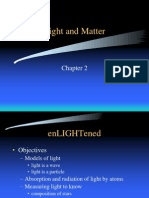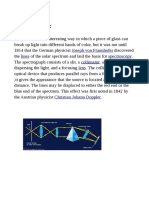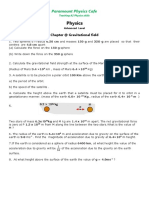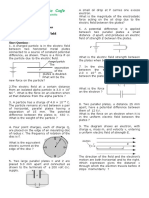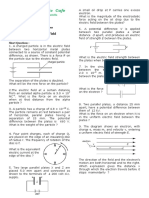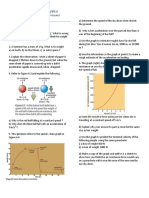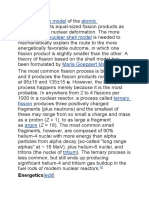0% found this document useful (0 votes)
87 views40 pagesUnderstanding Blackbody Radiation
This document discusses spectroscopy and blackbody radiation. It begins by introducing blackbody radiation and how the wavelength of peak intensity and height of peak intensity of blackbody curves relate to a star's temperature and energy output. It then explains the three basic types of spectra: continuous, absorption, and emission. Absorption spectra occur when light from a blackbody passes through a cooler gas, resulting in dark lines where the gas absorbs specific wavelengths. Spectroscopy is the study of how matter interacts with electromagnetic radiation through spectral analysis.
Uploaded by
Mahbub KhanCopyright
© © All Rights Reserved
We take content rights seriously. If you suspect this is your content, claim it here.
Available Formats
Download as PDF, TXT or read online on Scribd
0% found this document useful (0 votes)
87 views40 pagesUnderstanding Blackbody Radiation
This document discusses spectroscopy and blackbody radiation. It begins by introducing blackbody radiation and how the wavelength of peak intensity and height of peak intensity of blackbody curves relate to a star's temperature and energy output. It then explains the three basic types of spectra: continuous, absorption, and emission. Absorption spectra occur when light from a blackbody passes through a cooler gas, resulting in dark lines where the gas absorbs specific wavelengths. Spectroscopy is the study of how matter interacts with electromagnetic radiation through spectral analysis.
Uploaded by
Mahbub KhanCopyright
© © All Rights Reserved
We take content rights seriously. If you suspect this is your content, claim it here.
Available Formats
Download as PDF, TXT or read online on Scribd
/ 40















